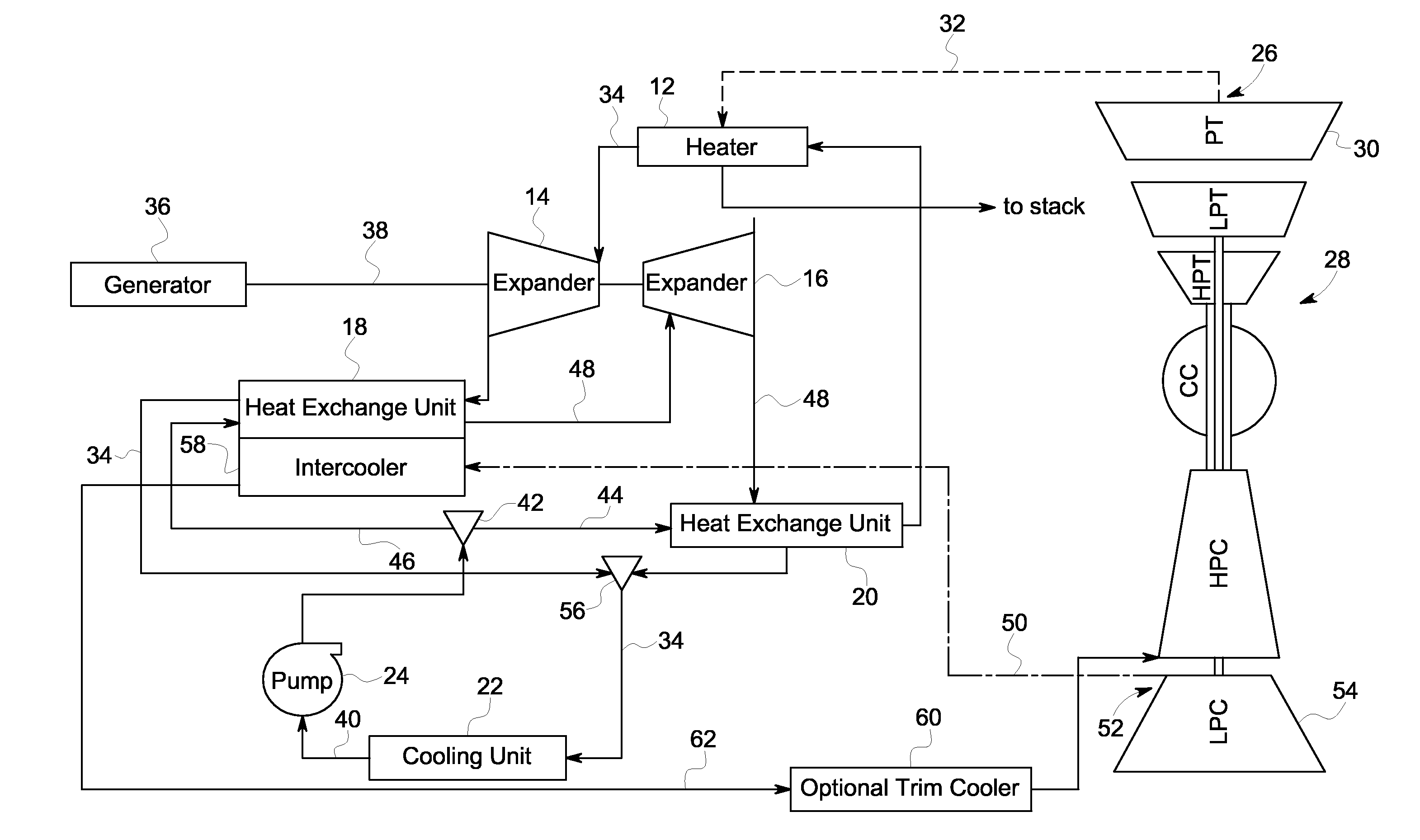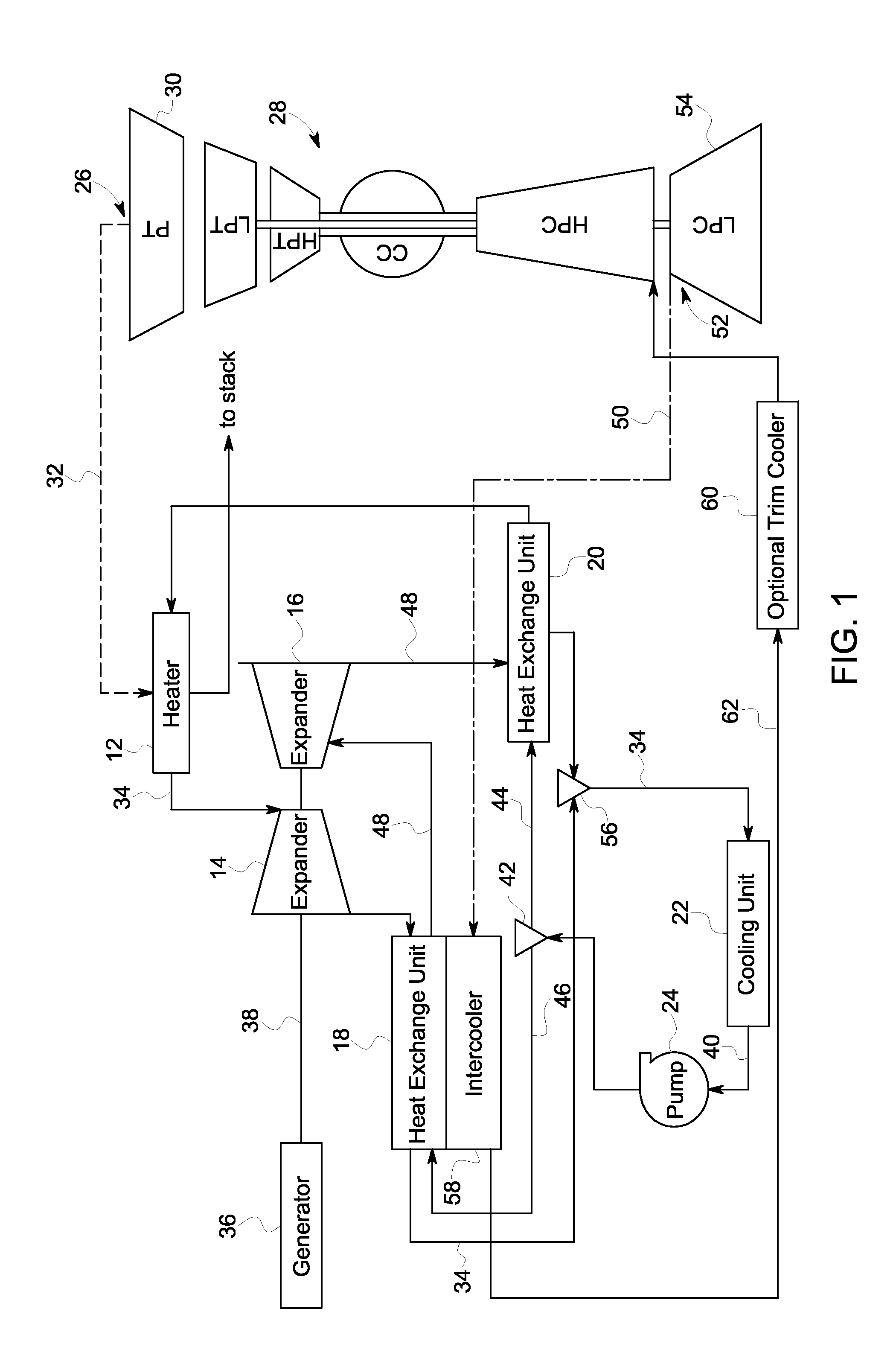System and method for recovery of waste heat from dual heat sources
- Summary
- Abstract
- Description
- Claims
- Application Information
AI Technical Summary
Benefits of technology
Problems solved by technology
Method used
Image
Examples
Embodiment Construction
[0013]In accordance with the embodiment discussed herein, a heat recovery cycle system for recovering waste heat from dual sources is disclosed. The exemplary heat recovery cycle system includes a heater configured to circulate a working fluid in heat exchange relationship with a hot fluid so as to vaporize the working fluid. The heat recovery cycle system includes a first heat exchange unit configured to circulate a first vaporized stream of the working fluid from the heater in heat exchange relationship with a first portion of a cooled stream of the working fluid so as to heat the first portion of the cooled stream of the working fluid. The heat recovery cycle system further includes a second heat exchange unit configured to circulate a second vaporized stream of the working fluid in heat exchange relationship with a second portion of a cooled stream of the working fluid so as to heat the second portion of the cooled stream of the working fluid before being re-fed to the heater. I...
PUM
 Login to View More
Login to View More Abstract
Description
Claims
Application Information
 Login to View More
Login to View More - R&D
- Intellectual Property
- Life Sciences
- Materials
- Tech Scout
- Unparalleled Data Quality
- Higher Quality Content
- 60% Fewer Hallucinations
Browse by: Latest US Patents, China's latest patents, Technical Efficacy Thesaurus, Application Domain, Technology Topic, Popular Technical Reports.
© 2025 PatSnap. All rights reserved.Legal|Privacy policy|Modern Slavery Act Transparency Statement|Sitemap|About US| Contact US: help@patsnap.com


